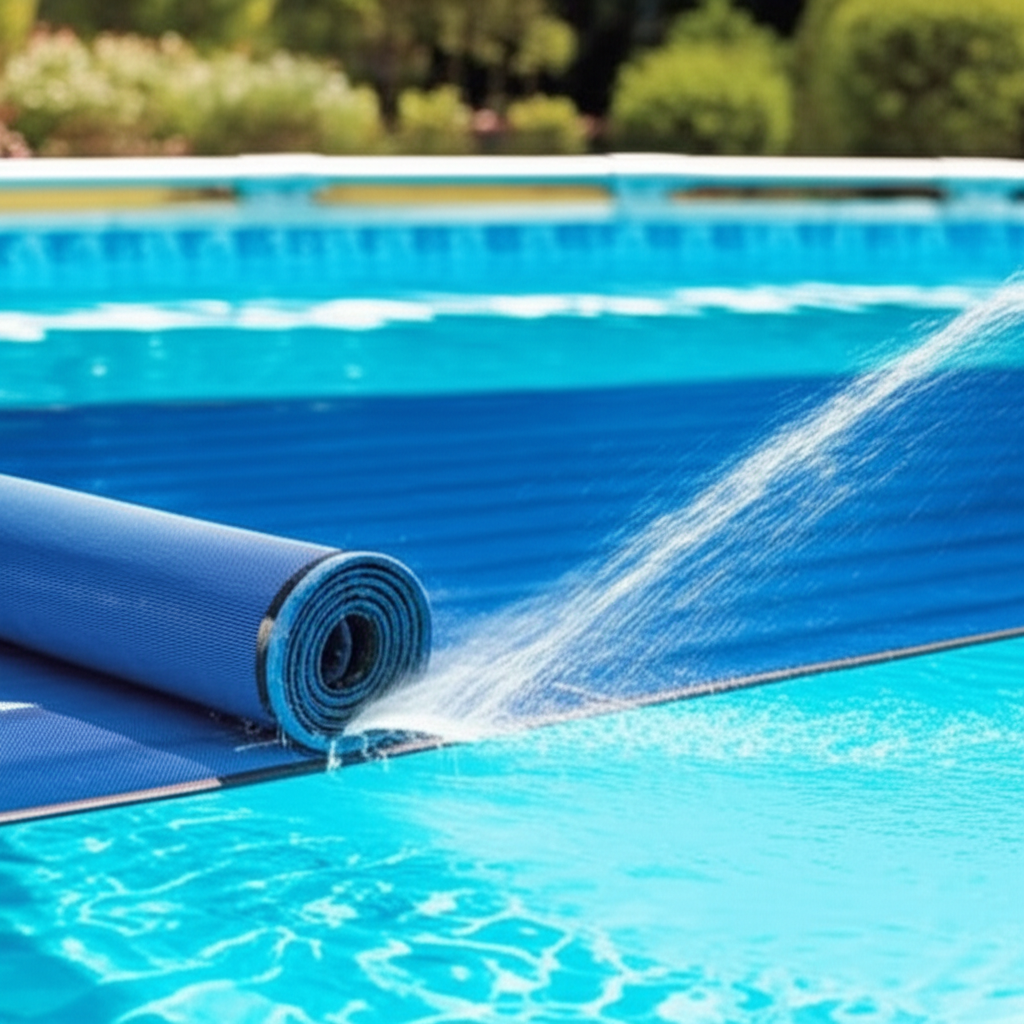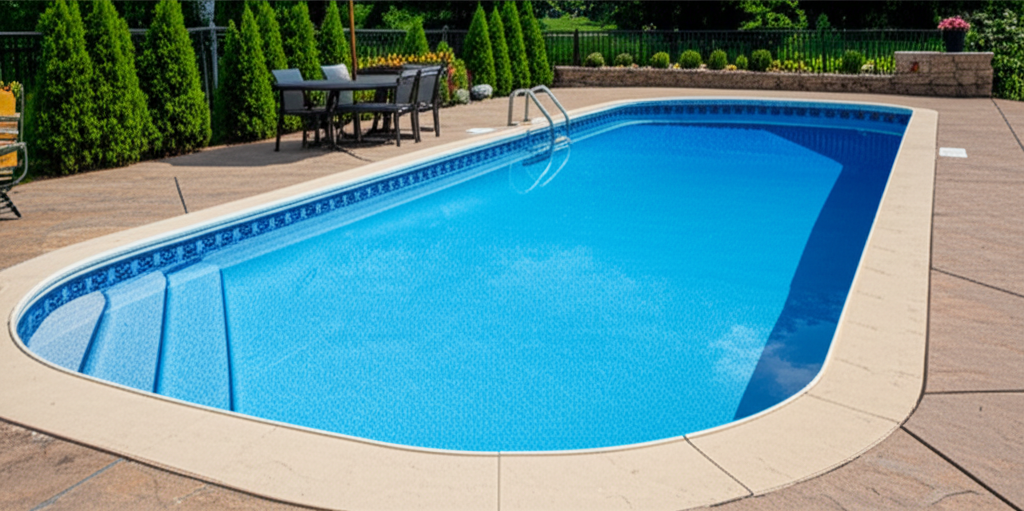- Why is Consistent Pool Cover Care So Important?
- Understanding Your Pool Cover Type
- Essential Tools for Effective Safety Cover Cleaning
- Step-by-Step Guide to Flawless Pool Cover Cleaning
- Beyond Cleaning: Year-Round Pool Cover Care Tips
- The Benefits of Consistent Pool Cover Care
Pool Cover Care: It’s more than just a chore; it’s an essential practice that protects your investment, maintains water quality, and ensures the safety of your loved ones. While often overlooked, a well-maintained pool cover can significantly extend its lifespan, prevent costly repairs, and keep your pool sparkling clean and ready for swim season. This guide will walk you through flawless cleaning techniques and provide effortless tips to keep your pool cover in top condition year-round.
Why is Consistent Pool Cover Care So Important?
Your pool cover acts as the first line of defense against the elements, tree debris, and unwanted visitors. Neglecting its upkeep can lead to a host of problems:
Extended Lifespan: Regular cleaning prevents the build-up of abrasive dirt, acidic tree sap, bird droppings, and algae, all of which can degrade the cover material over time. This prolongs its service life, saving you money on premature replacements.
Optimal Water Quality: A clean cover prevents dirt and contaminants from leaching into your pool water, especially when opening the cover. This means less work for your filtration system and fewer chemicals needed to balance your water.
Ensured Safety: For safety covers, maintaining their integrity is paramount. Debris, mold, and mildew can weaken the material or straps, compromising their ability to support weight. Regular inspection and cleaning help identify and address issues before they become safety hazards.
Aesthetics: Let’s face it, a dirty, stained pool cover detracts from the beauty of your backyard oasis. A clean cover enhances the overall appearance of your pool area.
Understanding Your Pool Cover Type
Before diving into the cleaning process, it’s helpful to consider the type of pool cover you have, as this may influence certain steps.
Solid Covers: These block sunlight and debris entirely but can accumulate water, leaves, and other organic matter on top, which can lead to staining and algae growth on the cover itself.
Mesh Covers: Designed to let rainfall drain through, mesh covers keep out large debris but are prone to trapping fine silt and dirt within their weave.
Automatic Covers: These covers are convenient but require gentle handling, especially around their tracks and mechanisms. They often combine elements of both solid and mesh covers.
Essential Tools for Effective Safety Cover Cleaning
To achieve flawless results, gathering the right tools is key. Most of these are readily available and make the job much easier:
Soft-Bristled Brush or Broom: For sweeping loose debris without damaging the cover.
Garden Hose with a Powerful Nozzle: For rinsing and dislodging stubborn dirt.
Leaf Blower (Optional): Excellent for quickly removing dry leaves and light debris.
Wet/Dry Shop Vac (Optional): Useful for removing standing water or wet debris from solid covers.
Pool Cover Cleaner or Mild Detergent: Look for specialized pool cover cleaners or use a diluted solution of dish soap, ensuring it’s biodegradable and non-abrasive. Avoid harsh chemicals like bleach, which can damage cover materials.
Soft Rags or Sponges: For scrubbing stains.
Protective Gear: Gloves and eye protection are always a good idea.
Step-by-Step Guide to Flawless Pool Cover Cleaning
Here’s how to give your pool cover a thorough and effective cleaning:
1. Remove Loose Debris (Dry First):
Before introducing water, use a leaf blower or soft-bristled broom to sweep off all loose leaves, twigs, and other dry debris. This prevents wet organic matter from becoming a muddy mess and makes subsequent steps much easier. For solid covers with standing water, use a pool cover pump to remove the water before sweeping.
2. Rinse Thoroughly:
Once dry debris is gone, use your garden hose with a strong nozzle to thoroughly rinse the entire surface of the cover. Work from the center outwards, pushing any remaining dirt or fine particles towards the edges. This initial rinse loosens grime and ensures the cleaner can work more effectively.
3. Apply Cleaner:
Dilute your pool cover cleaner or mild detergent according to the product instructions. For stubborn stains, you might apply the cleaner directly to those areas. Use a soft brush or sponge to spread the solution evenly over the entire cover. Allow the cleaner to sit for 5-10 minutes, letting it penetrate and break down dirt and grime. Avoid letting it dry on the cover.
4. Gentle Scrubbing:
With your soft-bristled brush or sponge, gently scrub the entire surface of the cover. Pay special attention to areas with visible stains, mold, or mildew. For mesh covers, ensure you get into the weave to dislodge trapped silt. Be firm but gentle; aggressive scrubbing can damage the cover material.
5. Final Rinse (Crucial Step):
This is perhaps the most important stage. Rinse the cover meticulously with your garden hose, ensuring all soap residue and loosened dirt are completely washed away. Any cleaning solution left on the cover can dry, leaving streaks, attracting new dirt, or potentially damaging the material over time. Continue rinsing until the water runs clear and no suds are visible.
6. Thorough Drying (Vital for Storage):
For covers that will be folded and stored (like winter solid or mesh covers), proper drying is critical. Spread the cover out in a sunny, well-ventilated area until it is completely dry. Storing a damp cover is an open invitation for mold, mildew, and unpleasant odors. If cleaning an automatic cover, leave it partially or fully exposed to air dry after cleaning.
Beyond Cleaning: Year-Round Pool Cover Care Tips
Safety Cover Cleaning is often done before winterizing or opening the pool, but pool cover care extends beyond just a major cleaning session.
Regular Debris Removal: Even during the swimming season, regularly remove leaves and debris from your automatic cover or solid cover. This prevents stains and reduces the load on the cover.
Prompt Stain Removal: Address spills or fresh stains as soon as possible. The longer they sit, the harder they are to remove.
Inspect for Damage: Routinely check your cover for tears, holes, frayed straps, or signs of wear. Early detection allows for minor repairs that prevent further damage and maintain safety.
Proper Storage: When storing your cover for the off-season, ensure it’s completely dry, folded neatly, and stored in a cool, dry place away from pests and direct sunlight. Use a storage bag or container if provided.
* Winterizing Covers: For winter covers, ensure they are securely anchored and properly tensioned to prevent wind damage or collapse under snow load.
The Benefits of Consistent Pool Cover Care
Embracing a routine for your pool cover care yields remarkable returns. You’ll enjoy a cleaner pool with less effort, a cover that lasts for many years, and the peace of mind that comes from knowing your pool is safely and efficiently protected. It’s a small investment of time that pays dividends in convenience, longevity, and enjoyment of your swimming pool.
By following these simple yet effective steps, you’re not just cleaning a piece of equipment; you’re safeguarding an integral part of your pool system, ensuring flawless function and effortless results for seasons to come.




